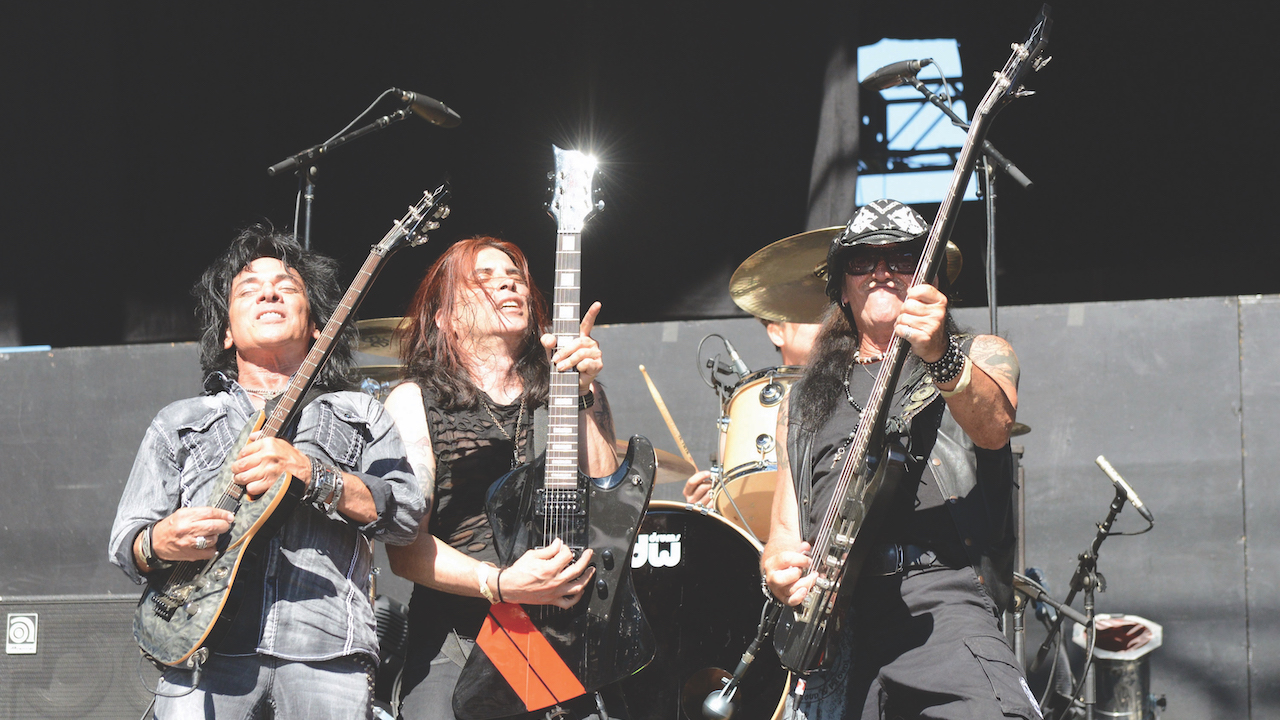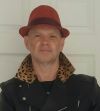“I spent five eight-hour days working on that solo until I knew I had it”: Steve Lynch on how Autograph conquered the airwaves with debut single Turn Up The Radio
Influenced by Harvey Mandel and Emmett Chapman, Turn Up the Radio announced the arrival of Steve Lynch…

With a title like “Turn Up the Radio,” Autograph’s 1984 hit song might seem like a cynical attempt to score points — and airplay — with deejays. But as lead guitarist Steve Lynch explains, that was the last thing he and his bandmates were thinking when they penned the tune.
In fact, it was titled “Turn Up the Tape Machine” when the group — Lynch, singer and guitarist Steve Plunkett, bassist Randy Rand, keyboardist Steve Isham and drummer Keni Richards — cut a demo of it during pre-production for their RCA debut album, Sign in Please. “Eventually, it dawned on us that we were missing an obvious way to reel in some serious airplay,” Lynch says.
As Lynch reveals, the song was a late arrival, written near the end of pre-production. “We had taken a break and I was by myself, playing this idea that turned out to be the main riff,” he recalls. “Randy heard it and began playing along, and then he came up with the next part. After that, the rest of the guys joined in, and we started blending our ideas. It was just a jam, but it had an undeniable groove to it.” Within an hour, “Turn Up the Tape Machine” was complete — all but the critical name change, of course.
Considering the predominance of shred guitar in the 1980s, Lynch was in his element. He had already built a reputation as a fretboard tapper with the release of his 1979 book, The Right Touch.
“I was influenced early on by Harvey Mandel, who I saw play in 1974,” he explains. “But the real kicker was when I saw Emmett Chapman, the inventor of the Stick, when he did a clinic at GIT, back in 1978. That completely changed my view of guitar, and that’s when I immersed myself in the technique heavily, using all eight fingers. I believe the release of my book in 1979 was so well received because there was nothing else out there to explain the technique.”
Certainly, if you didn’t know Lynch by 1984, you did after hearing “Turn Up the Radio.” His solo announced the arrival of a major talent. “It was a composed solo, as all of mine are,” he says. “I believe each solo should be written to accommodate the song. I spent five eight-hour days working on that solo until I knew I had it. I even had the band transpose the chord progression up a whole step, to A major, to give the solo a lift.”
Critical to Lynch’s guitar tone was his custom Charvel, which was fitted with a Seymour Duncan pickup. “It was built in 1984 by Grover Jackson at the San Dimas factory and had a poplar body, maple neck and ebony fretboard,” he recalls.
“I remember there was an old Marshall 50-watt head with 25-watt Celestion speakers. There was also a hot-rodded Mesa/Boogie amp that I played through simultaneously. I doubled the solo, as I’ve done with all my solos, with the tape speed running at 99 percent on one track and 101 percent on the doubled track to give it a slight out-of-pitch sound, which actually made it sound fuller. We panned one at 10 o’clock and one at 2 o’clock for separation.”
By the time the recording was completed, Autograph knew “Turn Up the Radio” had hit potential. “We had our suspicions that the song would do very well, not only because of the title and uplifting lyrics but because of the overall sound,” Lynch says. “We knew we had something special.”
Remarkably, the band’s label didn’t hear the song’s hit potential. “RCA wanted the first single off the album to be ‘Send Her to Me,’” Lynch says, “but we were adamant that ‘Turn Up the Radio’ was the song.” Fortunately, RCA gave in. “I can’t imagine how differently things would have been if that song wasn’t our first release. I remember, we were all together on a tour bus when we first heard it on the radio. Needless to say, we were ecstatic, high-fiving and hugging each other. It’s a special memory I’ll cherish forever.”
Forty years on, Lynch hasn’t lost his fondness for the song and the rewards that its success brought. “I honestly think we captured the best feel this song could have ever had,” he says. “It was 1984 and we nailed it to the floor. Whenever I play it live and I see the hands raise up in the air and the voices cheering, there’s no better place to be.”
Get The Pick Newsletter
All the latest guitar news, interviews, lessons, reviews, deals and more, direct to your inbox!
Mark is a freelance writer with particular expertise in the fields of ‘70s glam, punk, rockabilly and classic ‘50s rock and roll. He sings and plays guitar in his own musical project, Star Studded Sham, which has been described as sounding like the hits of T. Rex and Slade as played by Johnny Thunders. He had several indie hits with his band, Private Sector and has worked with a host of UK punk luminaries. Mark also presents themed radio shows for Generating Steam Heat. He has just completed his first novel, The Bulletproof Truth, and is currently working on the sequel.
"Why can't we have more Django Reinhardts going, 'F*** everybody. I'll turn up when I feel like turning up'?" Happy birthday to Ritchie Blackmore. The guitar legend looks back on his career in an interview from our December 1996 issue
"Get off the stage!" The time Carlos Santana picked a fight with Kiss bassist Gene Simmons and caused one of the guitar world's strangest feuds










